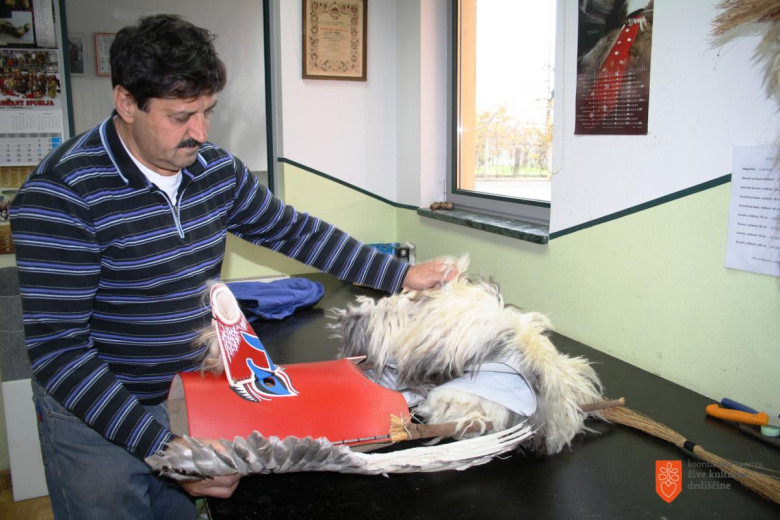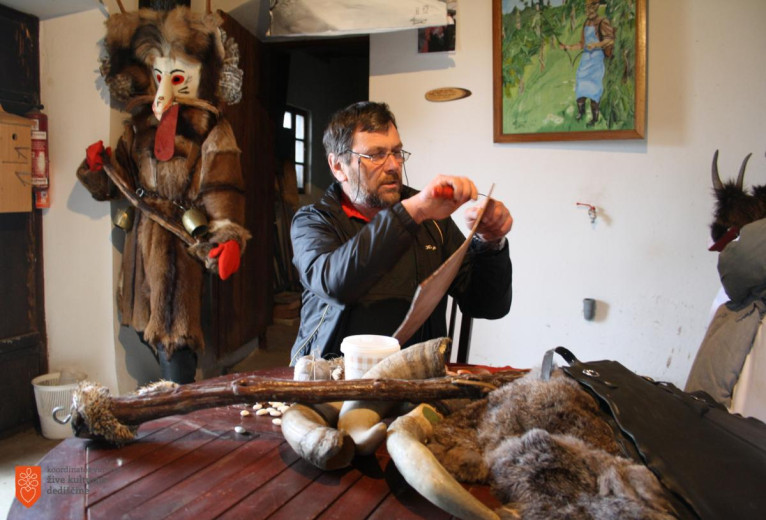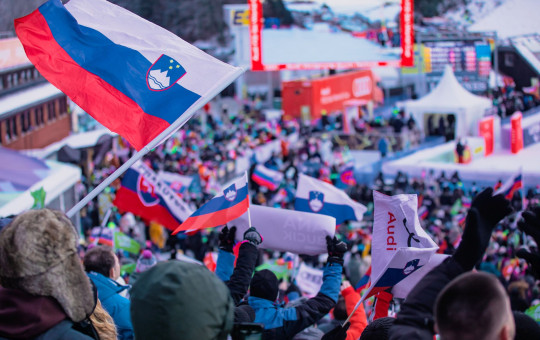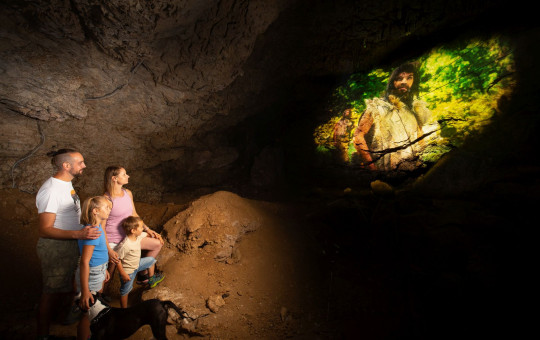Date: 22. February 2025
Time to read: 3 min
As an international ethnological festival, Kurentovanje has become an indispensable part of the European carnival calendar. This year's 65th Kurentovanje will take place from 22 February to 3 March.
Kurentovanje - the largest Slovenian and Central European carnival festival
In the north-eastern part of Slovenia, one of the most beautiful traditions has been preserved - called kurentovanje, the largest Slovenian and Central European carnival festival. Kurents, or korants, are the most numerous ethnographic carnival characters, who make their annual rounds through villages and towns between Candlemas and Ash Wednesday. The performers of this heritage come from the family community in the villages, but also in the towns. Grandfathers passed on the ritual to their sons and grandsons, as only men had the physical strength to carry the heavy kurentia and fight evil.
Today, the kurentis are made by local craftsmen. Wives and girls make the decorations - paper flowers and ribbons, woollen leggings, painting leather masks, embroidering handkerchiefs. The kurentia consists of a sheepskin coat, a kurent cap, five bells and a porcupine quill. There are two types of kurentis: feathered and horned. In the feathered type, the leather mask is surrounded by sheepskin, turkey or goose feathers and various coloured paper ribbons and flowers tied to the leather horns. In the case of the horned, the leather mask is surrounded by sheepskin, with real cow horns mounted on top.
-
As an international ethnological festival, Kurentovanje has become an indispensable part of the European carnival calendar. Photo: Ukom archive
-
The Carnival procession attracts tens of thousands of visitors from Slovenia and abroad every year. Photo: Ukom Archive
-
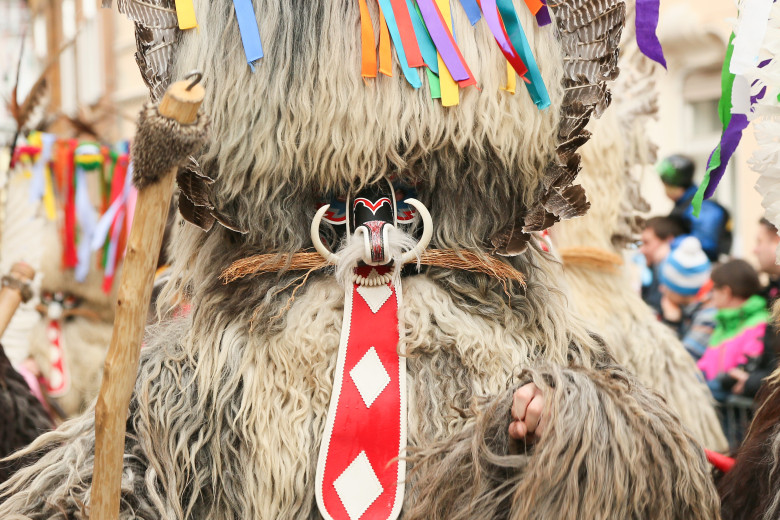 We still do not know whether the Kurent is of pagan, Slavic, perhaps even Greek or other origin. Photo: Ukom Archive
We still do not know whether the Kurent is of pagan, Slavic, perhaps even Greek or other origin. Photo: Ukom Archive
The mission of the kurents
A group of kurents runs into the courtyard, where they hop around the master in a circle. They chase away all that is bad and bring happiness and contentment with their boisterous ringing and hedgehog waving. They are offered food and drink by the locals and given handkerchiefs by the women as a token of their affection.
The Kurent is an ambassador of social and cultural change, taking us back to a time when man lived in harmony with nature, flora, fauna and his fellow man. The message value of the Kurent's walks co-creates and strengthens the sustainable identity of the city of Ptuj and its surroundings. Carnival rites are part of a common identity, a link with the mystical, an escape from the mundane world and a banishing of winter.
On the UNESCO Intangible Cultural Heritage List
In 2017, Kurentovanje was inscribed on the UNESCO Intangible Cultural Heritage List. Today, only a few craftsmen are still making kurentis, and it takes about two days to make one. The hat alone weighs around six kilogrammes, as does the sheep's wool fur, with the bells adding the rest. Exactly five bells create the right amount of melody and noise to successfully chase away winter. For a complete set of kurentia for an adult you will pay up to 1000 euro, for a child around 500 euro, the bells cost around 300 euro.
The uniqueness of the festival has made it attractive to tourists from all over the world, and the event promotes not only the Ptuj region, but the whole of Slovenia as a destination with a rich cultural heritage.

